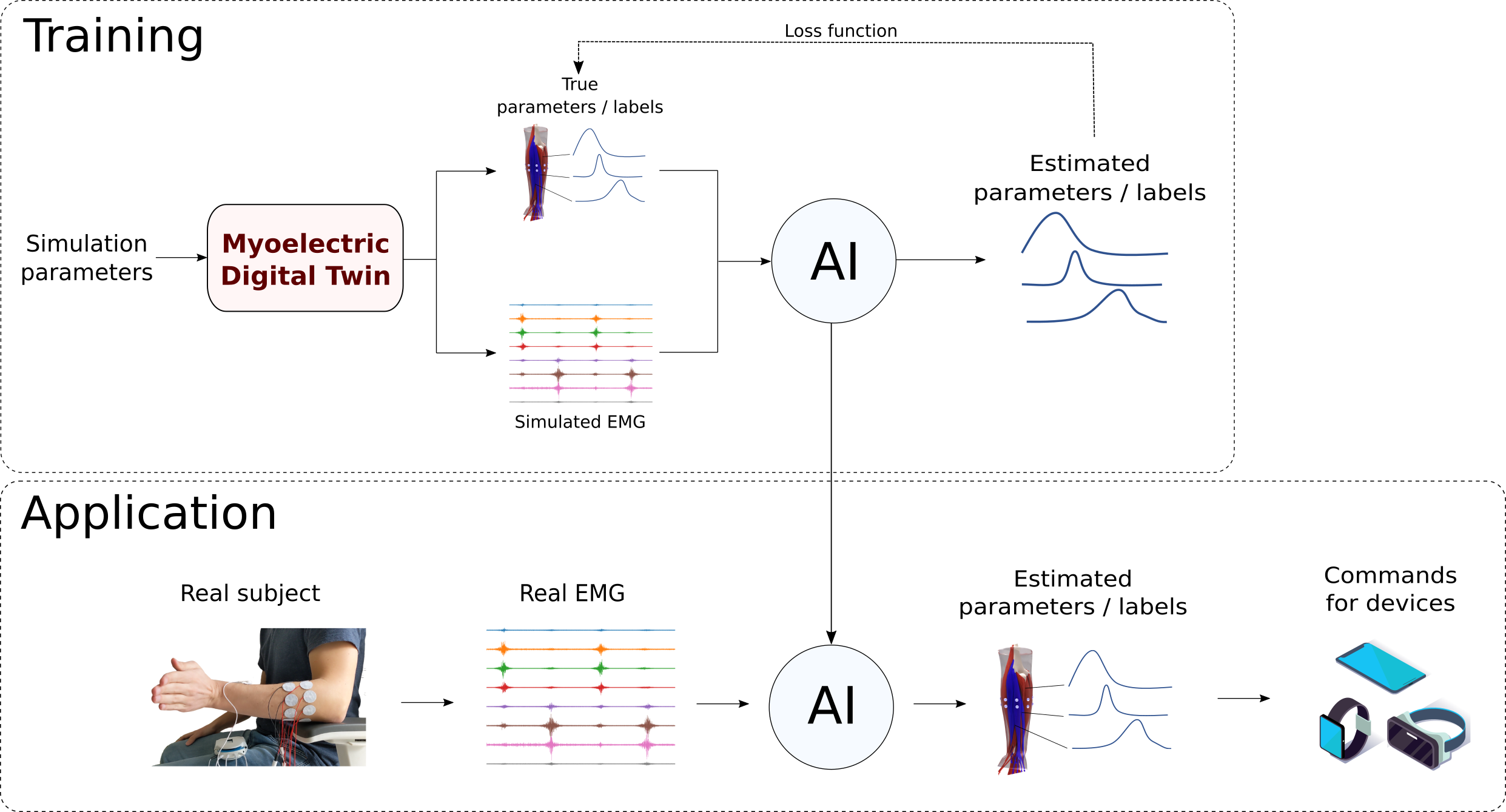Why MDT?#
The acquisition of EMG data is both time-consuming and expensive. It requires expert knowledge and is error-prone even in the best circumstances. Specifically, real EMG data have the following limitations:
Limited variability: Capturing the cross-subject variability implies acquiring data for many subjects. This is both time-consuming and expensive. In addition, some subgroups may be difficult to reach, for example the elderly.
Highly specific: Data can be acquired for a limited number of movements. For new movements, acquisitions must be restarted from scratch. This is also true for hardware or condition changes.
Partially labeled: The metadata associated with real EMG is limited to movement type and subject characteristics (e.g. age). Essential information, such as MUAPs, impulse trains, and forces of individual muscles is at best partially available using invasive measurements or simply not available.
With the Myoelectric Digital Twin, you will be able to simulate arbitrary large datasets of ultra-realistic synthetic EMG signals. The simulation is very fast, the data is extremely realistic, and it is perfectly labeled. Specifically:
Unlimited variability: EMG data can be simulated for arbitrary anatomies and movements simply by modifying a few parameters. Specific cross-subject variability can also be achieved by modifying a single parameter, for example to understand its impact on performance.
Highly flexible: Data can be simulated for a limitless number of movements. For new movements, simply simulate new data for the same population (or a different one!). Hardware changes can be explicitly and quickly tested by modifying input parameters, such as electrode position and size.
Perfectly labeled: All the parameters associated with a simulation are saved, resulting in perfectly labeled data. Essential information, such as MUAPs, impulse trains, and forces of individual muscles can be queried easily.
The Myoelectric Digital Twin is the ideal tool to validate EMG processing algorithms and speed up their development.
It also has the potential to augment (and maybe even replace) real EMG data for AI training.
